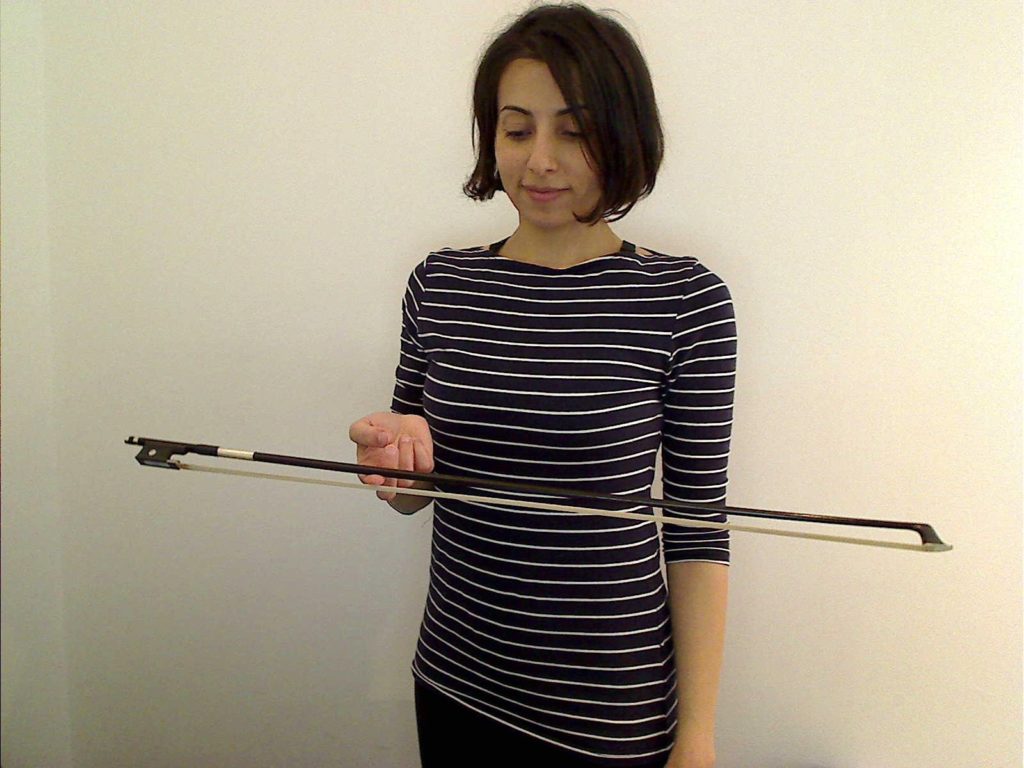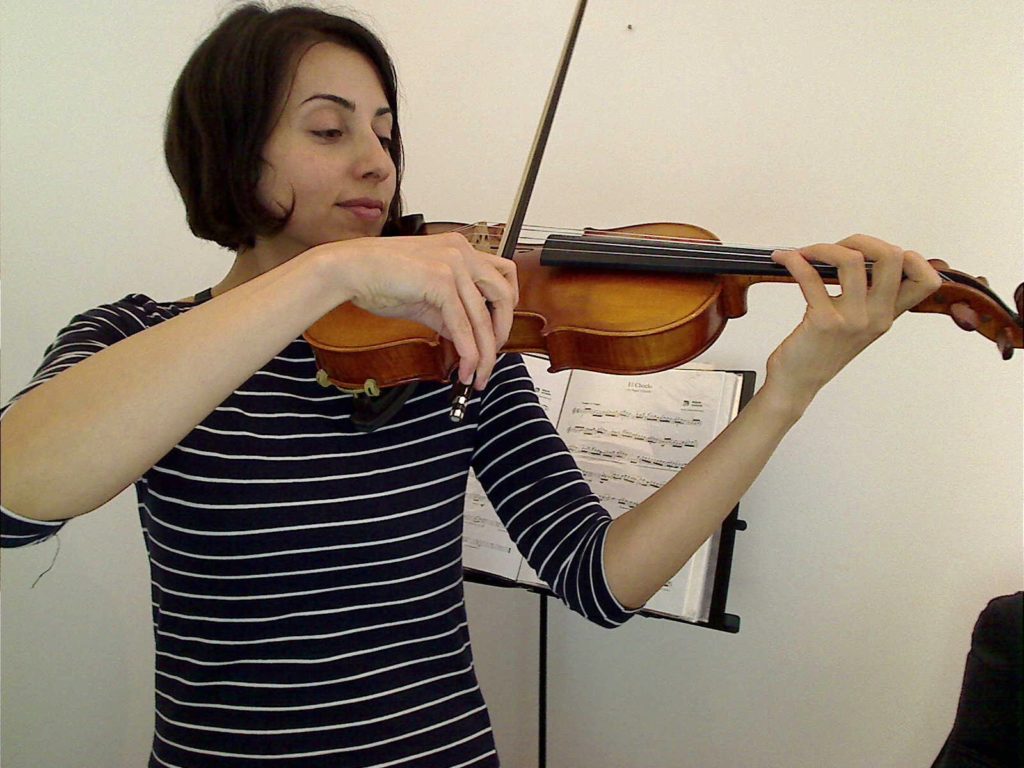'Big Circles' are simple, straightforward exercises that you can use as a warm up at the beginning of your practice. They're also useful for improving your bow control, and your feeling for the 'balance' of the bow.
Before we get started playing Big Circles, we need to be clear about how the balance of the bow works.

Depending on where we play in the bow, the balance of the bow changes. This is because at any given moment, there is more of the bow - and therefore more bow weight - on one side of the strings than the other.This is why we have to have a flexible bowhold that is constantly rebalancing the weight of the bow, by acting as a suspension system. If instead we have a 'fixed' bowhold that quite literally 'holds' the bow, then we can't rebalance the bow properly, and we end up with a hard, inflexible sound!
One of the areas where we need to 'balance the bow' the most, is at the very heel of the bow (the bottom end, where the bow hair connects into the 'nut' or 'frog' of the bow). When we are playing at the heel, the bow is very unbalanced, because most of the bow weight falls to the left of the strings (as you look at it whilst playing).
This is why it's hard to control our bow strokes in the lowest quarter of the bow.

To stop the bow falling in the wrong direction, we use the little finger as a counterweight. When the little finger is sitting on top of the bow, and its knuckle is engaged as a counterweight, it stops the bow falling uncontrollably.This provides stability to the bowing movements, and allows us to bow smoothly at the heel.
Big Circles: Relying on the Little Finger
The Big Circles exercise relies on the little finger operating correctly. If the little finger isn't acting as a counterweight, then the exercise won't work!
So the first step is to check that your bow hold is correct.

Use our Checklists to be sure that you've checked each part of your posture and your bowing arm technique, before you begin!
Raise your bowing arm into the air. Make sure that your little finger is already working as a counterweight, keeping the bow steady as you move.

Breathe out, and relax your body as much as you can without collapsing your posture. As you breathe out, lower the bow downwards towards the string (start with the D or the A string first). Focus in on your little finger, and feel how it continues to support the weight of the bow.
Allow the bow to touch the string very gently, but stay focused on the little finger counterweight. The little finger should continue being a counterweight until the bow is firmly engaged with the string, and above the level of the balance point (half-way point in terms of weight) of the bow.
Play a down bow all the way until the tip of the bow. Feel how the bow balance changes throughout the stroke, and note how the feeling in your right hand and fingers changes throughout the stroke.At the beginning of the stroke you will be trying to counter the heaviness of the bow weight, and not let it fall too heavily into the string.During the stroke, the bow will become more balanced, and your hand/fingers will not have to 'do' so much.Towards the tip of the bow, you may need to add in more weight into the bow, to create a consistent sound all the way to the end of the stroke.
Repeat the Big Circles several times, and stay focused on:

Please visit our sponsors:
London String School - Tuition for Adult Learners in London
MusicLand - Creative Music Products for Teachers and Learners
Please visit our sponsors:
FiddlerShop.com - Quality instruments at an affordable price
London String School - Tuition for Adult Learners in London
MusicLand - Creative Music Products for Teachers and Learners
